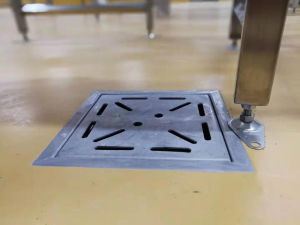1. Selection of cleaning tools: Use soft, non-abrasive cleaning tools such as sponges, soft-bristle brushes, etc. Avoid using hard tools such as steel wool to prevent scratching the stainless steel surface.
2. Avoid chemical corrosion: Use mild, non-corrosive cleaners and avoid using strong acid or alkali cleaners to avoid damaging the stainless steel material.
3. Cleaning order: remove solid debris first, then clean liquids and oil stains to prevent solid debris from scratching the ditch surface during the cleaning process.
4. Check the filter regularly: clean up the debris on the filter in time to ensure the smooth flow of the filter and prevent poor drainage and sewage backflow.
5. Pay attention to the drainage slope: Do not change the drainage slope of the ditch during maintenance to ensure that the water can be discharged smoothly.
6. Prevent heavy objects from hitting: It is strictly forbidden to place or drop heavy objects on the stainless steel trench to avoid deformation or damage.
7. Pay attention to the connection parts: Regularly check the connection parts of the trench components, such as screws, welding points, etc., to ensure that they are stable and not loose.
8. Deal with rust spots in time: If rust spots are found on the surface of stainless steel, they should be dealt with as soon as possible to prevent the rust spots from spreading.
9. Keep ventilated and dry: The environment around the trench should be kept well ventilated to reduce moisture and reduce the possibility of rust and bacterial growth.
10. Follow operating procedures: Maintenance personnel should strictly follow established maintenance procedures and safety regulations.
11. Check the sealant: Check the condition of the sealant regularly. If it is aging or cracked, re-seal it in time.
12. Avoid high temperature contact: Prevent high temperature liquids or objects from directly contacting the trench to avoid affecting the performance and life of stainless steel.
Post time: Aug-27-2024



